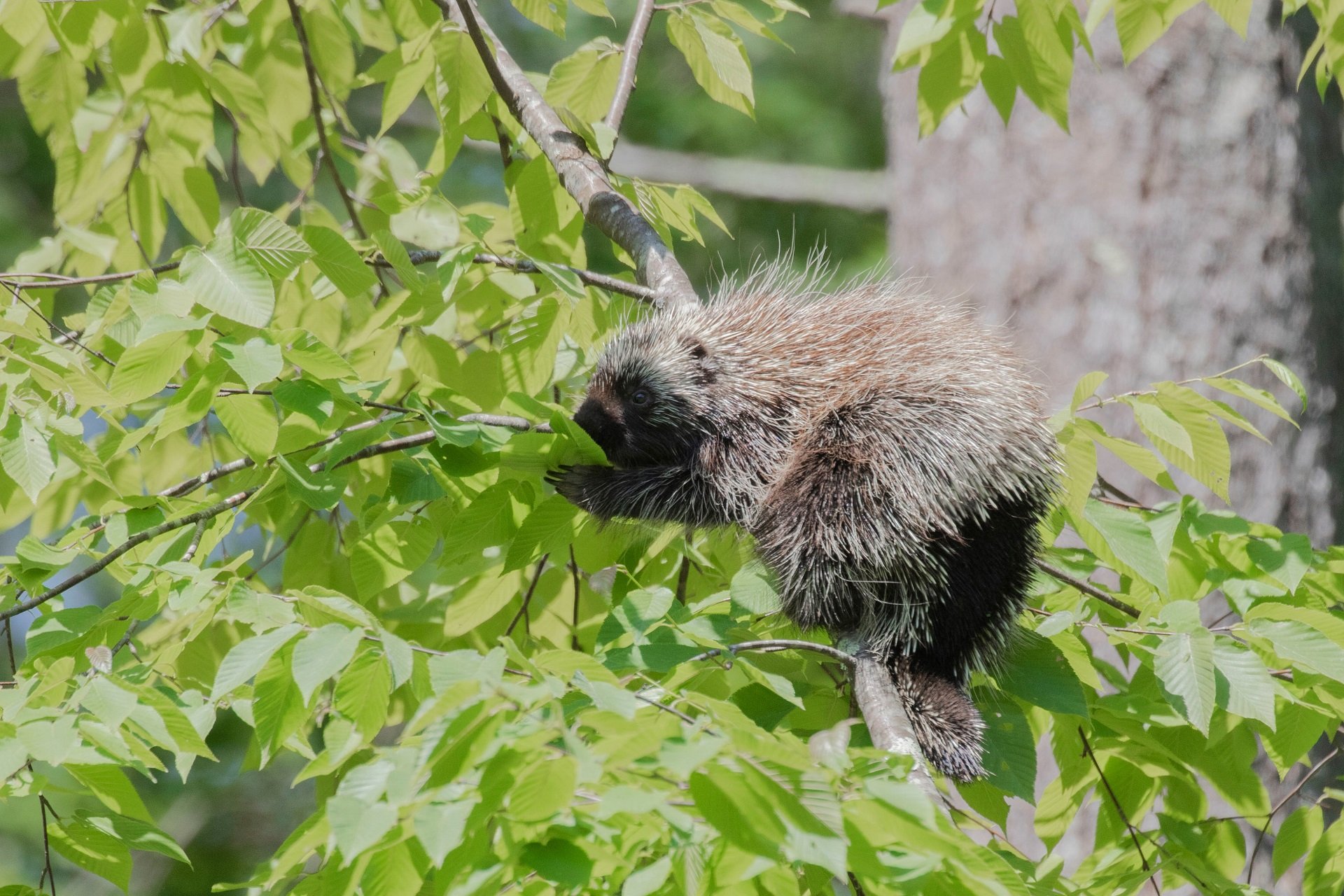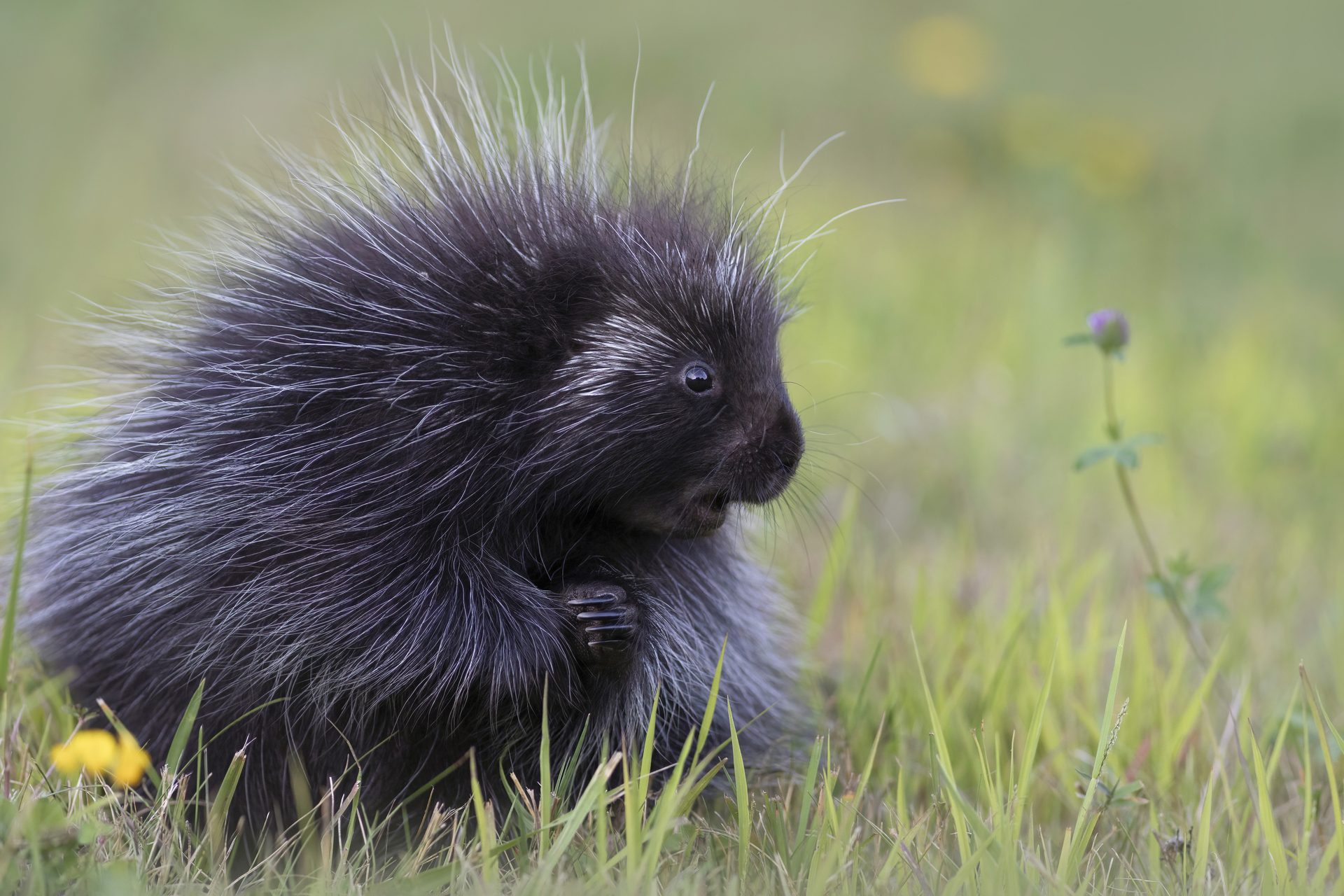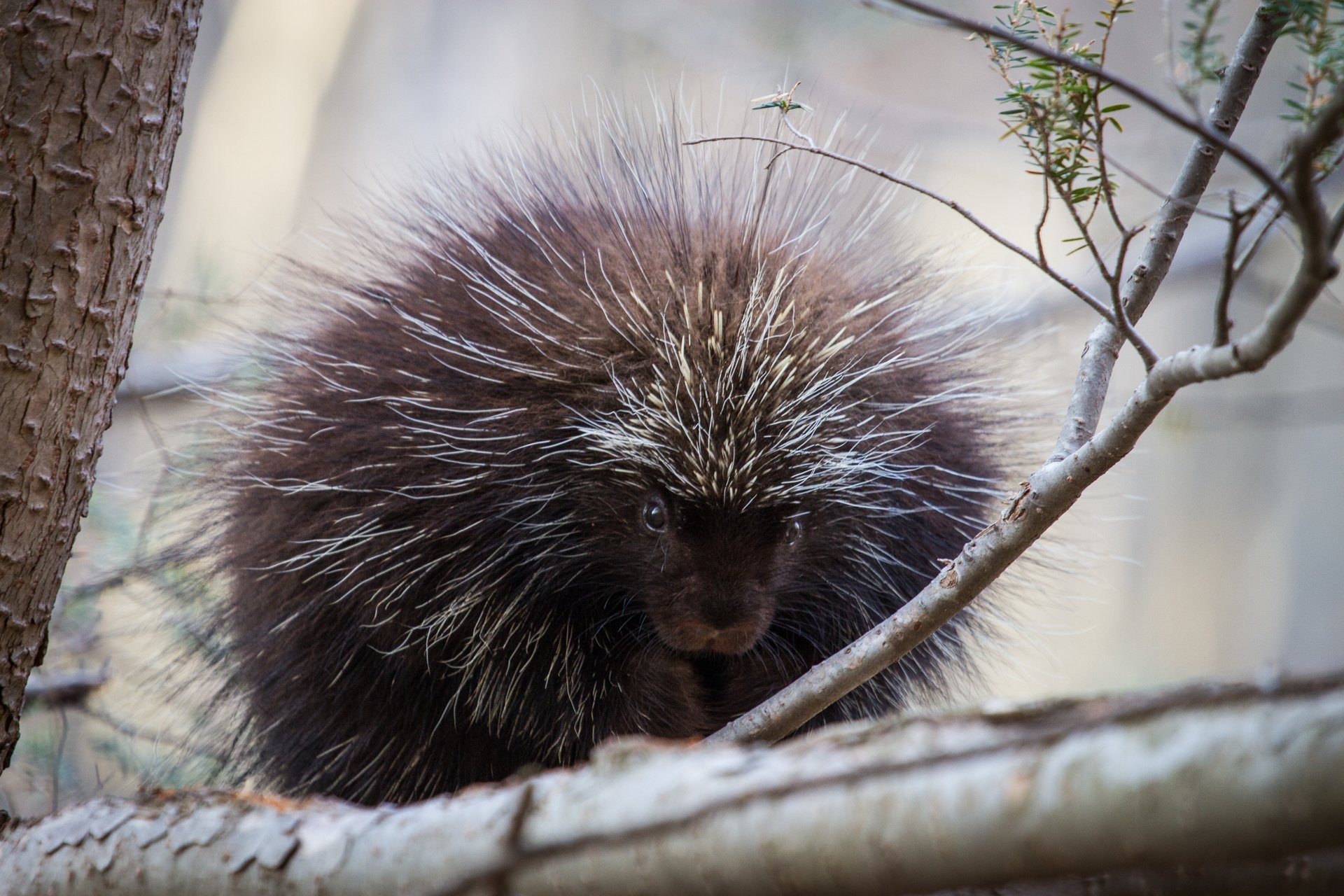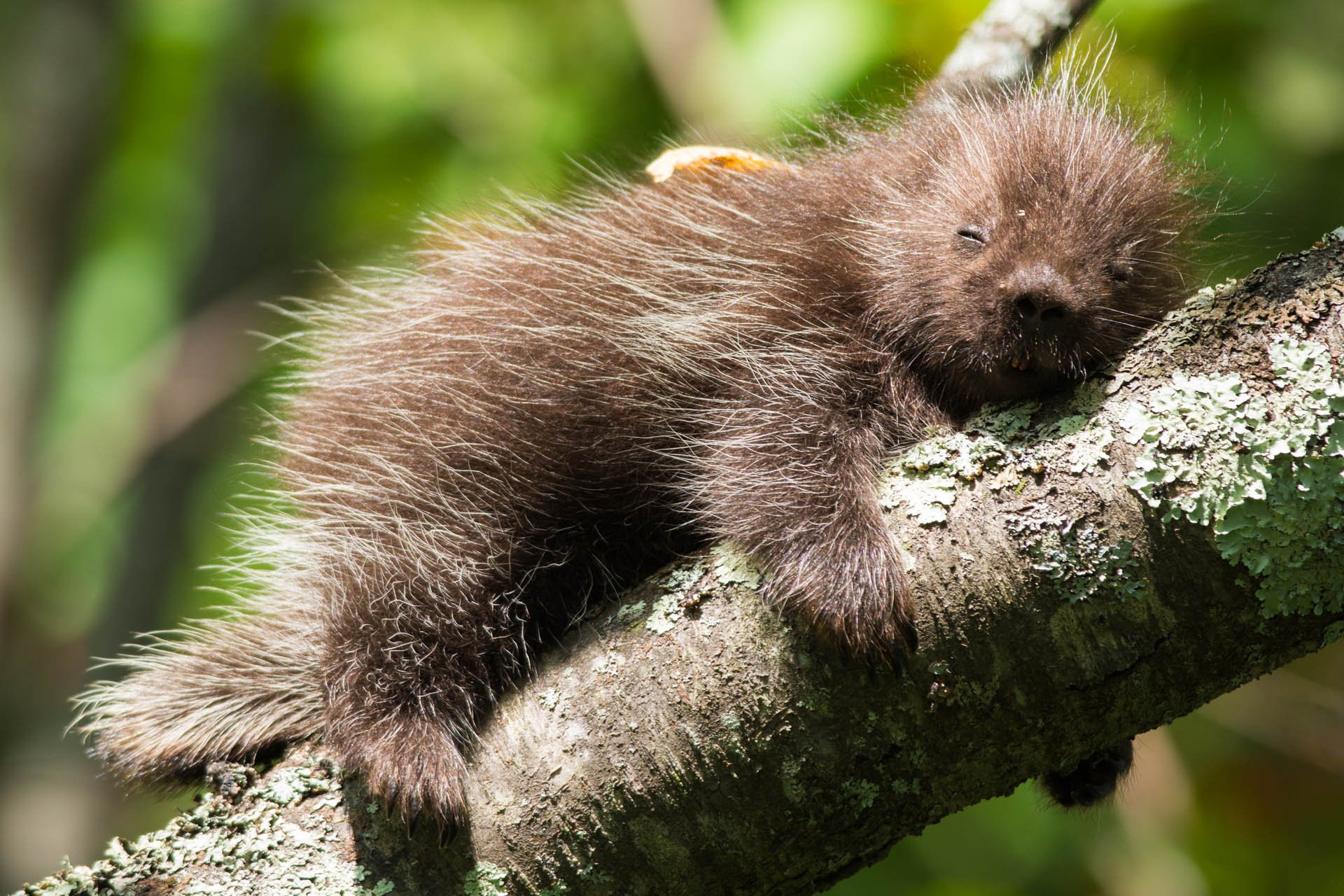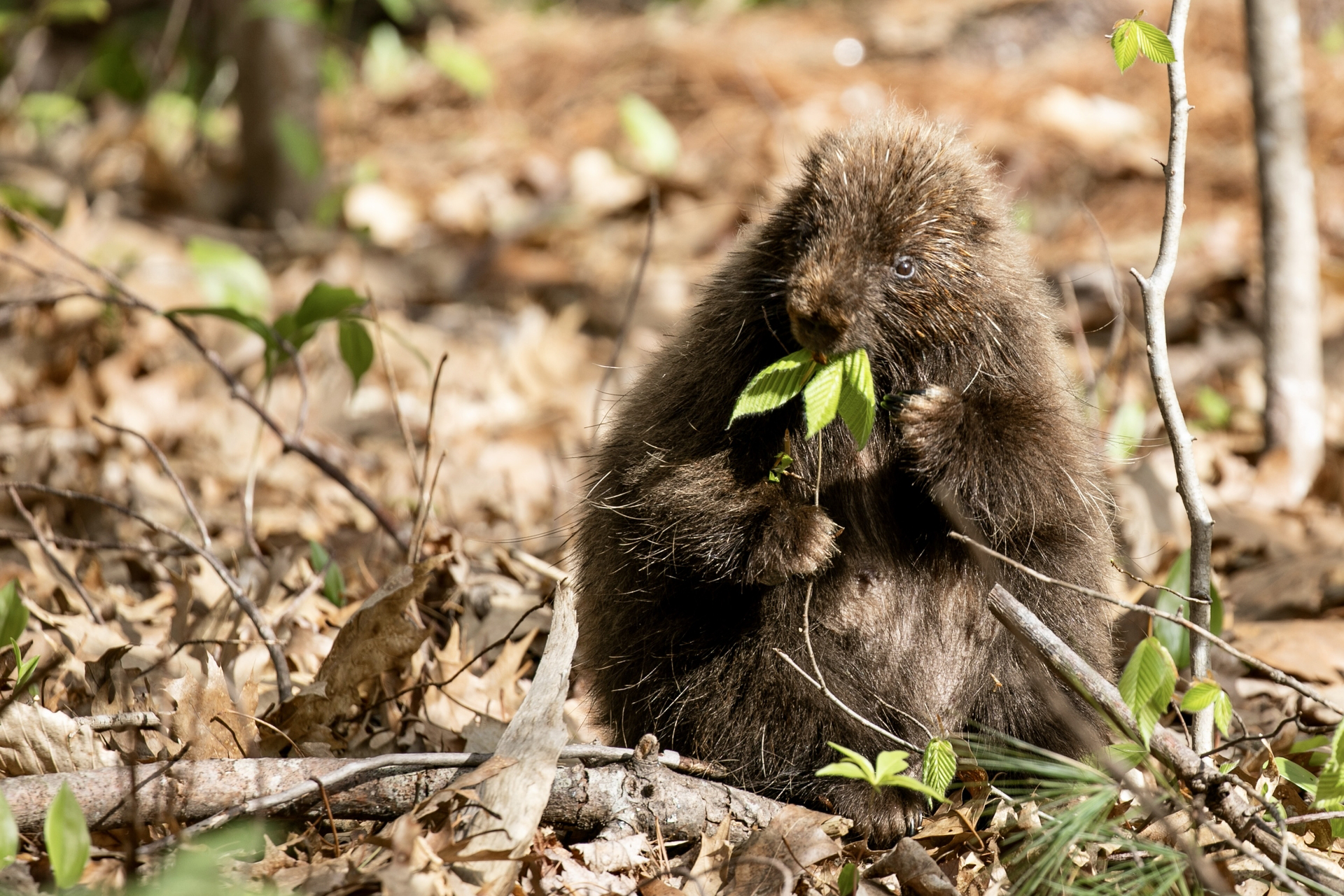Porcupines
Porcupines are solitary, slow-moving animals that largely keep to themselves unless threatened. The name “porcupine” comes from the French words for “pig” and “spiny,” but these unusual animals belong to the rodent family.
Their famous spines are specially modified hairs that are barbed and hollow. While these quills may scare off most predators, fishers—our largest weasel—aren’t deterred: fishers are one of the few mammals that prey on porcupines. North American porcupines are the only species of porcupine that makes their home in the U.S.
Porcupines are the second largest rodent in North America after the American Beaver.
How to Identify Porcupines
Porcupines are short and stocky with long claws and a high-arching back. They are the second largest rodent (after the beaver), weighing anywhere between 12-20 pounds and are 25-31 inches in length.
Porcupines have five different types of hair covering their body to assist with sensing, insulation, navigating, and self-defense. The most recognizable hair is the pointy quills, which are barbed and hollow and cover everywhere except the face, ears, and belly.
Contrary to popular belief, porcupines do not shoot their quills at predators who get too close. Rather the quills usually lie flat against the porcupine’s body until they encounter a threat, at which point they “puff up” and erect their quills, swinging their spiny tails until the threat either leaves them alone or gets a sharp whack in the face, hand, or paw full of quills.
But before the quills are erected for protection, porcupines will release a pungent odor from the base of their tail to warn off any dangers nearby. Only when the threat continues do they turn their back, raise their quills and make noises.
Porcupine Behavior
Porcupines are normally shy and solitary creatures (meaning you are unlikely to find one near your house), but in winter they may den in small groups. Large eastern hemlocks, rock ledges, and boulder slopes make great dens for porcupines. During the winter months, porcupines do not leave the den to defecate, so scat can pile up within and eventually spill out. A sign that a porcupine may be nearby is cut hemlock twigs on the snow in winter.
They are active year-round but are rarely seen because they are most active at night and prefer to hide high in a tree or a den during the day. They are very slow, attaining a maximum speed of only two miles per hour.
They are excellent climbers. Their long claws and wrinkly paws aid when going up and down trees in search of food.
What Do Porcupines Eat?
Porcupines are fond of salt and will sometimes chew on wooden objects that have been exposed to sweat, such as canoe oars or axe handles. This love of salt often leads them to roadsides where salt has been spread.
They are one of the very few rodents that are strict vegetarians. Their summer diet consists of flowers, berries, grains, and leaves. Apple, maple, and oak trees, among other trees, are favorites in the warmer months, but in the fall they prefer acorns, hickory nuts, and beechnuts. During the winter, they eat primarily evergreen needles and the inner bark of trees. A tree with branches stripped of its bark is often a sign of a porcupine in the area.
Porcupine Life Cycle
Porcupine courtship is elaborate and noisy. When the female comes into estrus (heat) in late fall, her scent can attract numerous suitors who may fight for hours to win her favor. The female gives birth after seven months—a long time for a small mammal—and her single young is born well-developed, with quills that harden within an hour of birth.
The mother usually takes minimal care of her porcupette after the first week, when the young porcupine can feed on their own. The porcupette eventually leaves its mother after six months.
Are Porcupines Dangerous?
The best thing to do if you encounter a porcupine is to leave them alone. They want nothing to do with you.
However, if you or your pet do come in contact and get quilled, seek immediate medical attention. Porcupine quills absorb water and body heat and will expand, working their way deeper into the skin. If possible, snip just the ends of the hollow quills to relieve the build-up of pressure inside, then seek professional medical care to ensure the quills are removed correctly and completely.
Threats to Porcupines
Most predators avoid porcupines, except the fisher, which is adept at flipping them to expose their tender bellies. Other predators include coyotes and bobcats.
Porcupines are also at risk of displacement with deforestation and human development. While they are fantastic climbers, they aren’t as nimble on the ground and are often struck by vehicles.
How Mass Audubon Helps Porcupines
Mass Audubon is helping porcupines by protecting their habitats and creating large, roadless wilderness where there is a decreased threat of being hit by a car. You can help us conserve and protect porcupines by becoming a member today.



